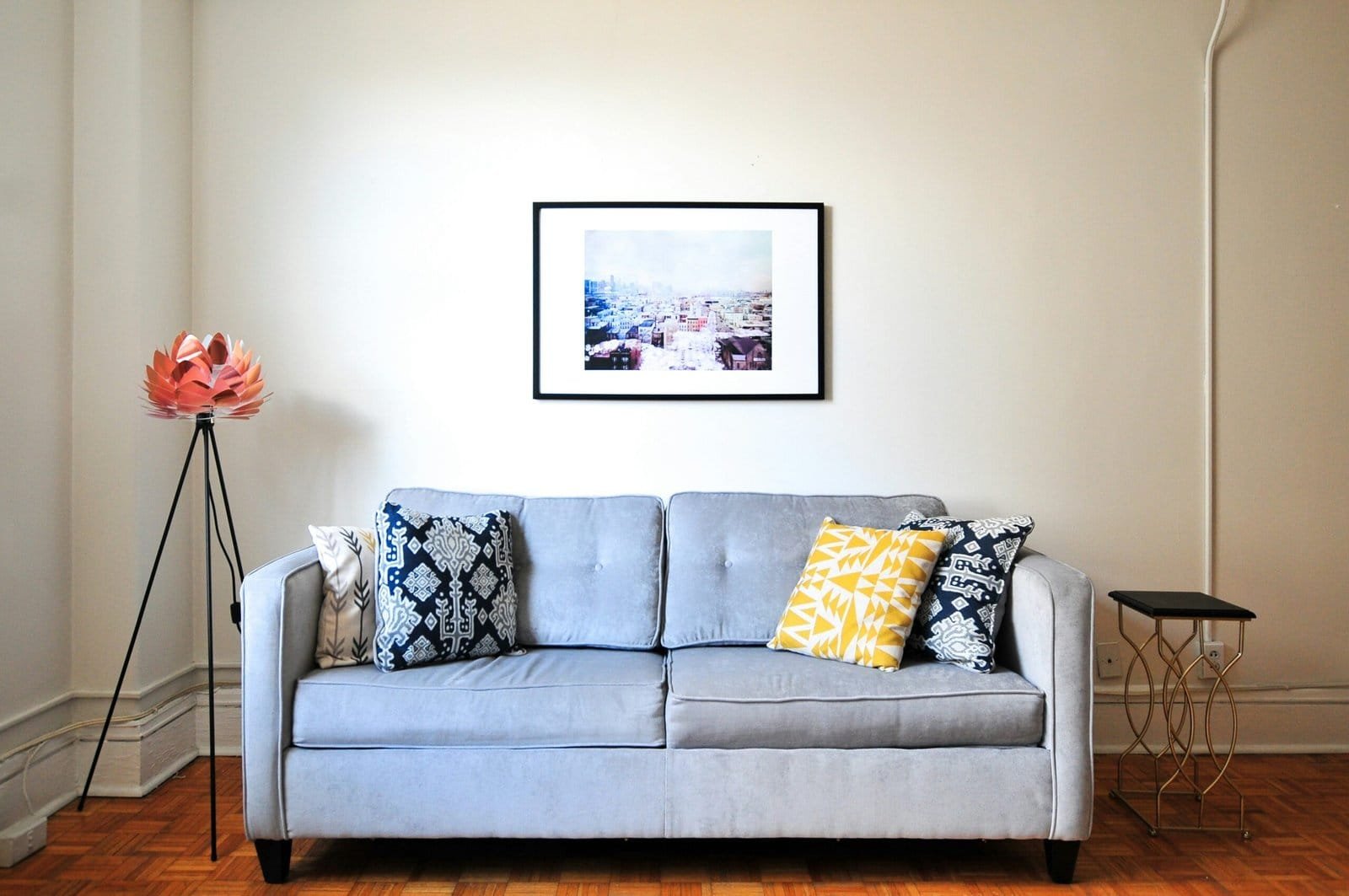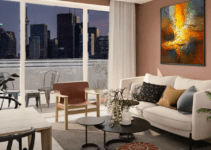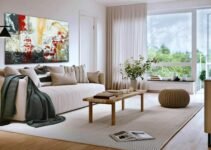Discover effective strategies for organizing your living room to reflect your lifestyle and needs. From understanding the functions of your space to incorporating creative storage solutions, this comprehensive guide covers everything from decluttering to furniture arrangement. Learn how to create distinct zones for various activities and personalize your living area without adding clutter. Embrace minimalist principles to simplify your living space and enhance its functionality. Engage with feedback and continually improve your living room to ensure it remains a welcoming hub for family gatherings and relaxation. Transform your living space into a harmonious sanctuary.
Understanding Your Living Room’s Function
The living room often serves as the heart of the home, encompassing various activities that reflect the lifestyle and needs of its inhabitants. To effectively make room for everything in this multifaceted space, it is crucial to comprehend its primary functions. Is this area primarily a family gathering spot, a workspace, or perhaps a reading nook where one seeks solace? Identifying the specific activities that transpire within the living room can greatly inform the organization and arrangement of furniture and decor.

Begin by evaluating your daily routines. For instance, if the living room is a central hub for family interactions, it may require comfortable seating options and a layout that facilitates conversation. Conversely, if work-related tasks are frequently conducted in this area, the inclusion of a small desk or designated workspace can enhance productivity. Recognizing these aspects allows for a tailored approach to organizing the space, ensuring it accommodates all desired functions.
Please, read our post and do not forget to check our YouTube channel “Grig Stamate”:
https://www.youtube.com/@GrigStamate
You will find there, thousands of designing, furnishing, and decorating ideas for your home interior and outdoors.
Allow me to mention three of them:
Best Small Living Room Design Ideas, Trends and Inspiration, #16 (video)
Best Small Living Room Design Ideas, Trends and Inspiration, #15 (video)
Small LIVING ROOMS with Smart FURNITURE PLACEMENT, #5 (video)
Incorporating versatile decor items, like ottomans that double as storage or coffee tables with hidden compartments, not only elevates the aesthetics but enhances functionality. The key is to maintain an ongoing assessment of how the space is utilized, adjusting the layout and furnishings as necessary to align with evolving activities and family needs. By understanding the primary functions of your living room, you position yourself to create a balanced, organized area that caters to every aspect of your daily life.
Decluttering: The First Step Towards Space Management
Decluttering is fundamental when optimizing the living room space. The first step in managing your living area effectively is to assess the items that occupy the space. An organized approach to decluttering helps you determine what you truly need and what can be removed. One common method is the “keep, donate, or toss” strategy, which streamlines the decision-making process. Begin by categorizing your belongings: items you use daily, those with sentimental value, and things that have been long forgotten or unused.
As you embark on this decluttering journey, it is essential to be honest with yourself. Start with one area at a time, as attempting to declutter the entire living room simultaneously can be overwhelming. For each item, ask yourself questions such as: Do I use this? Does it bring me joy? Is it worth the space it occupies? By addressing these questions, you can effectively filter the necessary items from the excess clutter.
Though practical, decluttering often comes with emotional challenges. Many individuals find it difficult to part with items due to their sentimental value or memories attached. It is important to acknowledge these feelings while also recognizing that holding onto items may hinder the space’s functionality. Sharing personal stories about such experiences can resonate with readers, fostering an understanding that they are not alone in their struggles. For instance, someone may hesitate to toss out an old bookshelf that belonged to a beloved family member, only to realize that they can honor that memory in other ways, such as keeping a photo of it instead.
Ultimately, the goal of decluttering is to create a living room that is not only functional but also reflects your current needs and lifestyle. By embracing the keep, donate, or toss method, readers will find it easier to take the necessary steps towards a more organized and spacious living environment.
Creative Storage Solutions You Never Knew Existed
As living spaces continue to evolve, homeowners are increasingly seeking storage solutions that do not compromise style or comfort. One effective approach to maximizing space in the living room is to explore creative storage options that utilize every inch of available space. Vertical storage stands out as a particularly efficient method; by extending shelves and cabinets upward, one can achieve ample storage without occupying precious floor area. This not only keeps the room organized but also adds a unique aesthetic element to the decor.
Another innovative solution is the incorporation of multifunctional furniture into your living room design. Items such as ottomans embedded with storage compartments or coffee tables that double as storage units provide utility while maintaining an inviting atmosphere. These pieces ingeniously combine seating and storage needs, minimizing clutter without compromising the room’s visual appeal. Furthermore, using decorative baskets or stylish bins can infuse personality into the space while serving as practical storage options.
Moreover, consider utilizing tucked-away spaces that often go unnoticed. For instance, the area beneath the television stand, or behind larger pieces of furniture in the living room, can serve as unexpected storage spots. Invest in sliding bins or pull-out drawers that seamlessly blend into the environment, making organization effortless. DIY options are also worth exploring. Upcycling materials or repurposing furniture can lead to personalized storage solutions that reflect the homeowner’s style and preferences. Crafting customized shelves or hidden compartments adds not only functionality but also a cherished sense of ownership to the living space.
These creative storage solutions present numerous possibilities for enhancing organization within a living room. By adopting a combination of vertical storage, multifunctional furniture, and cleverly designed DIY options, it’s possible to transform any living room into a tidy and stylish sanctuary.
Furniture Arrangement: It’s All About the Flow
The arrangement of furniture within a living room plays a pivotal role in defining the space’s feel and functionality. When thoughtfully organized, furniture can foster a natural flow that encourages movement, conversation, and comfort. One of the most effective methods for achieving this is to consider the layout in relation to the room’s focal points, such as a fireplace, television, or even a bay window. Positioning seating to face these key elements not only creates a more inviting atmosphere but also enhances the usability of the space.
During a recent experience of rearranging my own living room, I discovered the importance of leaving pathways clear. Initially, I had placed a sofa too close to a coffee table, which made navigation cumbersome. After shifting the furniture, ensuring at least two feet of space between the sofa and the table, I noticed a significant improvement in both the room’s accessibility and its overall comfort. This change also allowed for easier interactions among family members and guests, further highlighting how essential it is to enable a natural flow in the arrangement.
However, common mistakes can impede the flow of a living room. One such mistake is overcrowding or cramming too many pieces of furniture into a small area. This not only diminishes the visual appeal but also restricts movement, making the space feel claustrophobic. Another mistake is to neglect the vertical dimensions by not utilizing shelving or wall-mounted storage, which can help free up floor space. To avoid these pitfalls, always consider the size of the furniture in relation to the overall room and leave sufficient space for pathways, promoting accessibility and comfort.
Using Color and Light to Your Advantage
Employing color and light effectively can significantly alter the perception of space within your living room, creating an environment that feels larger and more inviting. The choice of colors plays a crucial role in this transformation. Lighter shades, such as soft whites, light grays, and pastel hues, reflect more natural light and enhance the feeling of openness. These colors not only create a serene atmosphere but also make the walls seem to recede, which can expand the overall feel of the room. Conversely, darker colors can be used to create cozy and intimate spaces; however, moderation is key to prevent the room from appearing cramped.
In addition to color, natural light should be maximized to enrich the living room’s ambiance. Positioning mirrors strategically can amplify light by reflecting it throughout the space. For example, a well-placed mirror opposite a window can double the amount of natural light perceived in the room. Moreover, incorporating various light fixtures, such as wall sconces, table lamps, or ceiling lights, allows for adjustable illumination, catering to different moods and activities. Soft lighting can give the room a warm and welcoming feel, making it an ideal space for social gatherings or relaxation.
Understanding color theory can further guide your decisions in creating a harmonious living room. For instance, utilizing a monochromatic color scheme can make the space appear more cohesive, while complementary colors can delineate different areas and add visual interest without overwhelming the eye. Personal experiences with paint colors can also provide valuable insights; testing small swatches before settling on a color can reveal how it interacts with the unique lighting conditions of your room. Overall, a thoughtful approach to using color and light will enhance the livability and aesthetics of your living space.
Personalizing Space without Clutter
Creating a personal touch in your living room is essential for transforming a generic space into a warm, inviting environment that reflects your individual style. However, it is equally important to strike a balance between personalization and clutter. By incorporating thoughtful design choices, one can enhance their living room with cherished items while maintaining functionality.
Begin by selecting a few significant items that hold sentimental value or represent your personality. This may include family heirlooms, travel souvenirs, or artwork created by loved ones. Displaying these treasures can infuse character into your room without overwhelming it. Opt for a dedicated shelf or a curated gallery wall where these pieces can shine without competing for attention. When deciding what to display, prioritize quality over quantity. This approach ensures that each selected item has a purpose and contributes to the room’s overall aesthetic.
Another effective method to personalize your living room is by incorporating greenery. Plants not only enhance the visual appeal of the space but also promote a sense of tranquility and freshness. Consider selecting a few low-maintenance houseplants, such as snake plants or pothos, which are perfect for those who may not have a green thumb. Position these plants strategically around the space to create vibrant focal points that complement your decor.
Art can also play a significant role in personalizing your living room. It is advisable to choose pieces that resonate with your tastes, conveying a story or emotion that you would like to share with guests. Rotating artwork seasonally or introducing smaller pieces can keep the space feeling dynamic without adding clutter. By thoughtfully curating your space, you can celebrate your personal style while ensuring the living room remains functional and inviting.
Creating Zones for Different Activities
One effective approach to organize a living room is to create distinct zones tailored to specific activities. This method not only enhances the functionality of the space but also elevates the overall aesthetic. To achieve this, it is essential to consider how each area will be utilized, allowing for a seamless transition between tasks such as reading, socializing, and watching television.
Begin by identifying the primary activities that take place in your living room. For example, if watching TV is a common pastime, establish a designated entertainment zone. Position comfortable seating, such as a sofa or chairs, in a way that directly faces the screen to optimize the viewing experience. Incorporating a coffee table can enhance this space, providing a convenient place for beverages and snacks.
Another essential zone to consider is a reading nook. This can be created by adding a cozy armchair, a side table, and adequate lighting, such as a floor lamp or table lamp. Positioning this area near a window may allow natural light to enhance the ambiance and create a serene environment for relaxation. Personal anecdotes indicate that establishing a reading zone can significantly boost productivity and enjoyment, encouraging residents to unwind with a book.
Socializing is an integral part of many living rooms, thus creating a gathering zone is essential. An arrangement of seating that fosters conversation, such as a circular layout with an assortment of chairs and a central coffee table, can cultivate an inviting atmosphere. Additionally, incorporating decorative elements, like throw pillows and rugs, can further define these zones while ensuring comfort for guests and family alike.
In essence, creating zones within your living room not only defines the purpose of each area but also contributes to a more organized and inviting space. By thoughtfully arranging furniture and decor, homeowners can significantly enhance the functionality and enjoyment of their living areas.
Embracing Minimalism: Less is More
In today’s fast-paced world, the philosophy of minimalism has gained significant attention as a means to create harmony within our living spaces. Adopting a minimalist mindset encourages individuals to assess their belongings and prioritize essential items, ultimately creating a more serene and functional living environment. By simplifying our surroundings, we not only gain clarity but also allow for a deeper appreciation of the items we choose to keep.
The minimalism approach revolves around the idea that “less is more.” It challenges us to rethink the necessity of each object in our homes, prompting a reflection on why we hold onto certain possessions. Many people find themselves attached to items that no longer serve a purpose, whether due to nostalgia, guilt, or simply habit. Recognizing this emotional connection is the first step towards decluttering and embracing a minimalist lifestyle.
To begin the journey towards minimalism, one can start by evaluating each room in the living space. Identify items that are rarely used or do not evoke joy. It is helpful to adopt a systematic approach, such as the “one in, one out” rule, where the acquisition of a new item necessitates the removal of an existing one. This practice not only reduces clutter but fosters a mindful approach to consumption.
Furthermore, creating designated spaces for each item can help maintain order while fostering a sense of simplicity and calmness. Fewer distractions in the living room enhances focus and quality of life, enabling individuals to appreciate their home and the moments spent there with family and friends. Through embracing minimalism, individuals can cultivate a living environment that reflects their true values and priorities, ultimately leading to greater well-being and satisfaction.
Getting Feedback and Constantly Improving
Creating a functional and aesthetically pleasing living room is a dynamic process that benefits significantly from external perspectives. Engaging friends and family for their feedback on your living room arrangement can provide fresh insights. They may notice aspects that you, as the primary designer, might overlook. After hosting gatherings or casual visits, take a moment to ask your guests how they perceive the flow and functionality of the space. Their responses can unveil new considerations or adjustments that enhance comfort and usability.
It is imperative to approach feedback with an open mind. Constructive criticism can be invaluable when reflected upon and integrated into your living room layout. Discussing elements such as seating arrangements, decor choices, and spatial design with others can highlight societal preferences that might align with your personal tastes. For instance, some may find the living room too cluttered, while others might suggest a more vibrant color scheme to evoke a lively atmosphere. These insights can guide you in fine-tuning your living room to strike a balance between personal style and practicality.
Moreover, adapting your living room to evolving needs is a continuous journey. As your lifestyle changes—whether due to new family members, a change in routine, or a shift in social dynamics—so too should your space. Periodically revisiting your living room design in light of these changes invites an ongoing reflection of your adaptability and growth as a homeowner. Continually seeking feedback and making strategic adjustments can lead to a harmonious setting that feels right for all who occupy it.
Other related posts from our website:
https://howtobuildahouseblog.com/best-small-living-room-design-ideas-trends-and-inspiration-16/
https://howtobuildahouseblog.com/fifteenth-part-60-inspiring-small-living-room-design-ideas/
https://howtobuildahouseblog.com/small-living-rooms-with-smart-furniture-placement-5/
Thank you so much for your attention.
Stay tuned. We will upload many other amazing posts to our website and videos onto our YouTube channel.
Thank you so much.
for your time and attention.
Best Regards
See you to another post,
Bye, Bye


